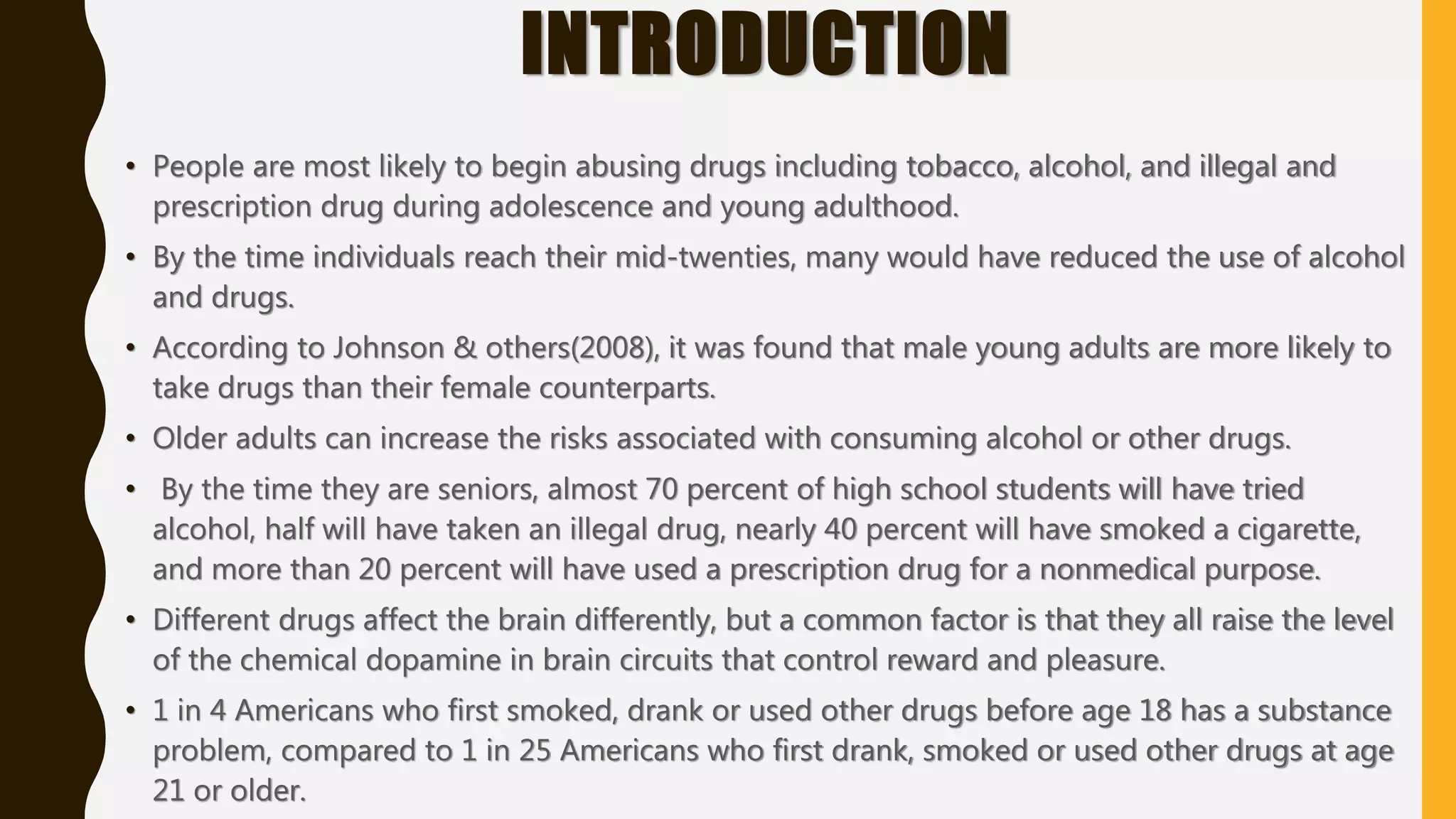The document discusses substance abuse and addiction during adulthood, highlighting that many individuals begin using drugs during adolescence, with varying risks associated with age and social pressures. It outlines the definitions of addiction and substance abuse, the impact of alcohol and nicotine, and the mental health implications of substance use. Prevention tips and the relationship between mental health and substance use disorders are emphasized, along with the challenges faced by adults in different life stages.
























